This Everest Base Camp trek (15-Day) is a two-week-long trekking trail, starting from Lukla, a small town with only an airstrip to the entire Everest region, and further taking you back to Lukla for a flight to Kathmandu.
This airstrip also known as Tenzing-Hillary Airport or LuklaAirport has shortened the trail of the entire Everest Base Camp Trek to 9 days, which was a trail of 3 weeks long via Jiri the only gateway to the Everest Region.
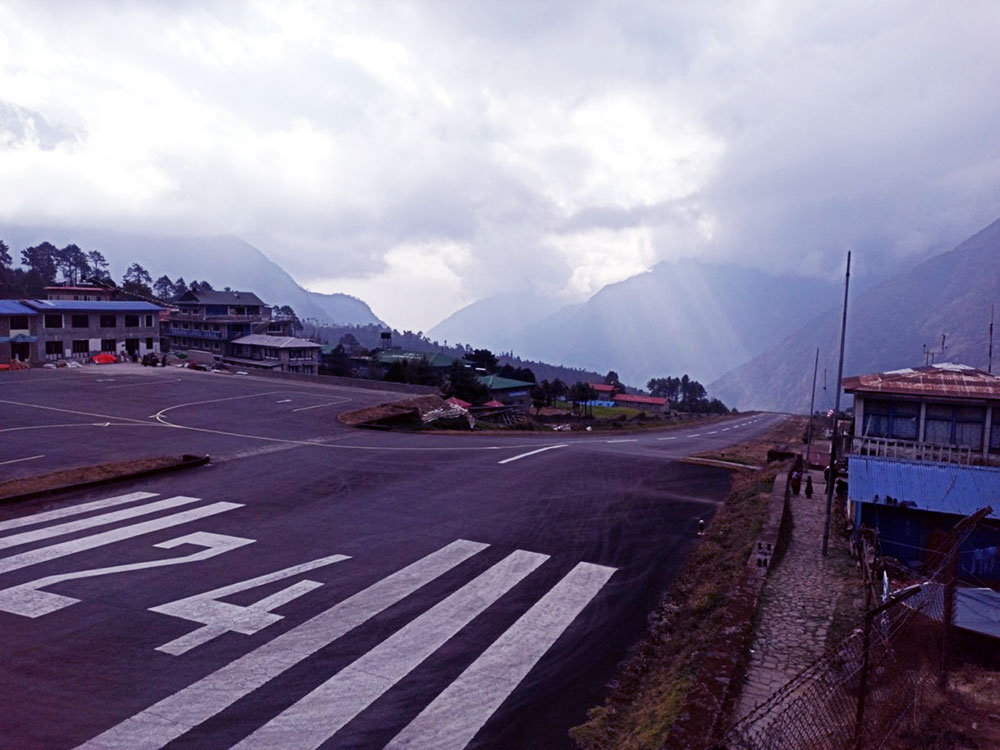
Now, the Lukla airport is the easiest way to carry construction materials and foodstuff to the entire Everest region, which normally happens early in the morning before the visibility for the plane gets disturbed.
Starting the trail from an altitude of 2840 meters/ 9318feet (Lukla), the trail goes with an incline climb uphill with some descent until you reach the base of the highest mountain on earth which is Mt. Everest (8848.86 meters).
It sounds easy to reachEverest Base Camp (10-Day) from Lukla, but it takes 8-day to reach the base camp with two extra nights for acclimatization and 3-days to descend back to Lukla from Everest Base Camp, making a journey of 130 km approximately from Lukla to Lukla.
However, on the very first day after landing at Lukla (2840m), trekkers move forward to Phakding (2610m) this is the downhill trail of almost 230 meters with ups and downs making a short 4-5 hour journey through Sherpa village, deep forest, farmland, rivers, etc., for the first-night stay.
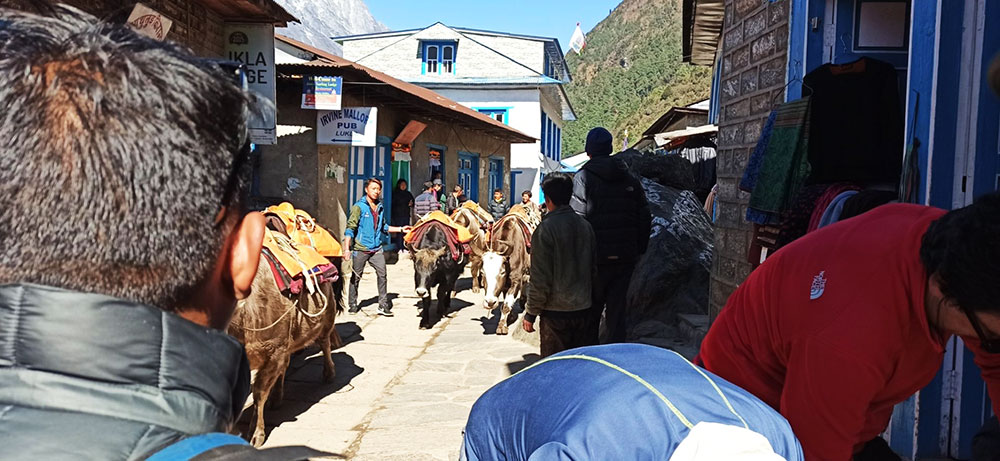
On the very next day, climb uphill passing by deep forest, and crossing the suspension bridge over the snow-melted river to the lower point of Namche Bazaar, as this is the entry point of Sagarmatha National Conservation Area to obtain the permit to enter Everest region.
Then, move towards Namche Bazaar (3446m), an official and trade headquarters for the entire Khumbu region. This little town is well-equipped with banks, ATMs, bars, hospitals, shops, bakeries, etc. Spending two nights will help you to acclimatize and can explore all around the town, and villages with the first view of Mt. Everest along with the surrounding Himalayas.
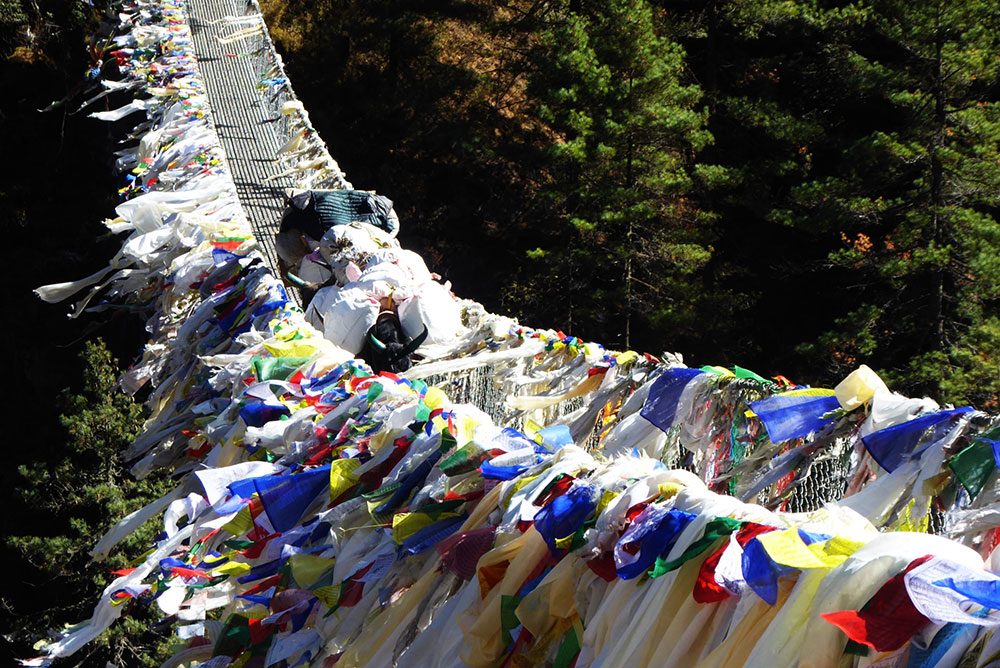
Namche Bazaar is a popular place for the first acclimatization spot. This extra night that you spend in Namche is mainly to help your body acclimatize for the coming days, so instead of spending flocking around the town, move higher to the surrounding hills and descend back to Namche. This can be visiting Everest View Hotel (3880M).
Further, with some ascending and descending through pine forest, visiting one of the popular monasteries of the entire Khumbu/Everest region known as Tengboche monastery you will reach Tengboche (3867M) for an overnight stay.
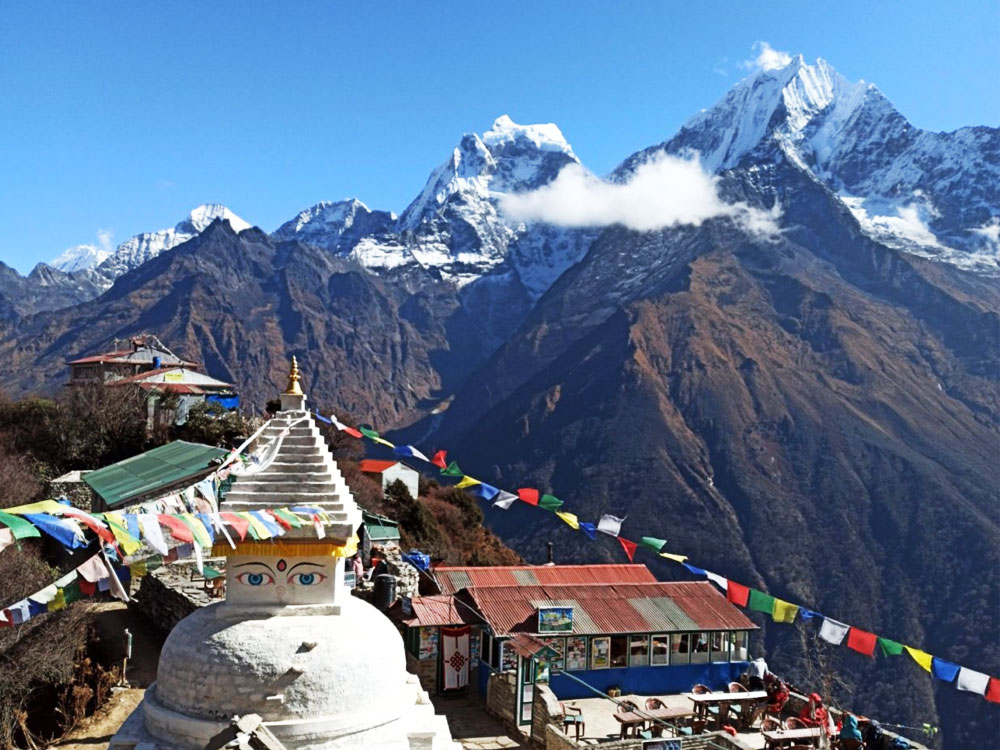
The very next day will be towards Dingboche (4410m), the trail will be through the bare Himalayas with far and deep visibility of the areas, lucky enough to see some wild beasts and Himalayan eagles. Dingboche is another acclimatization place that you can convert into a day hike toward nearby hills.
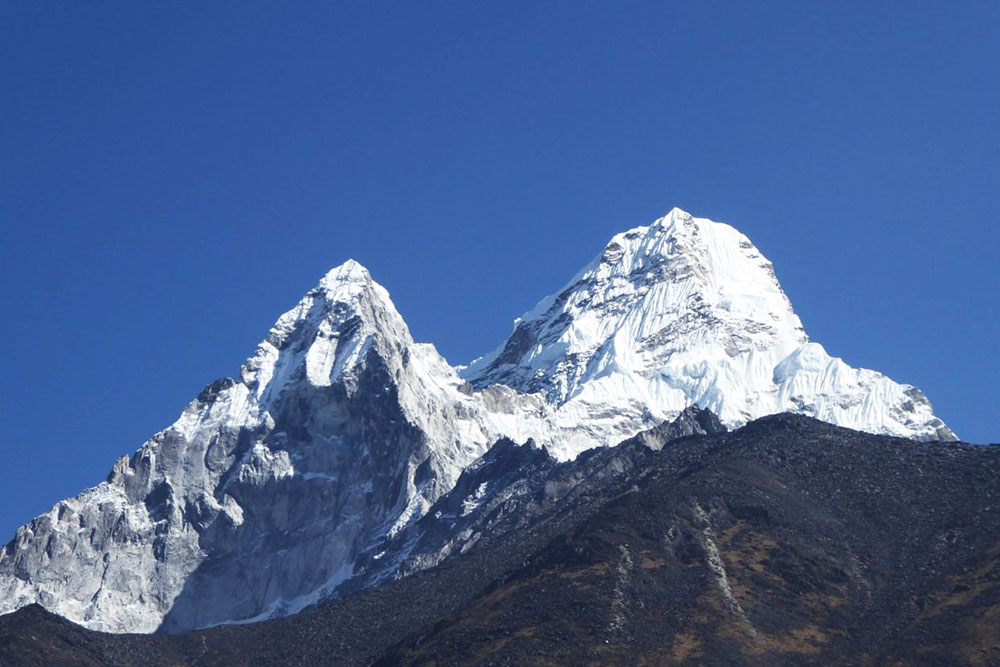
As you are already at a higher altitude, the oxygen level gets thinner as compared to lower altitudes. Hike passing by mani walls, making incline climb uphill to reach Lobuche at the altitude of 4910 meters/16109 feet. This will be a challenging climb and onwards can be a death zone to some. So, to stop risk factors, need to slow down your pace with frequent stops.
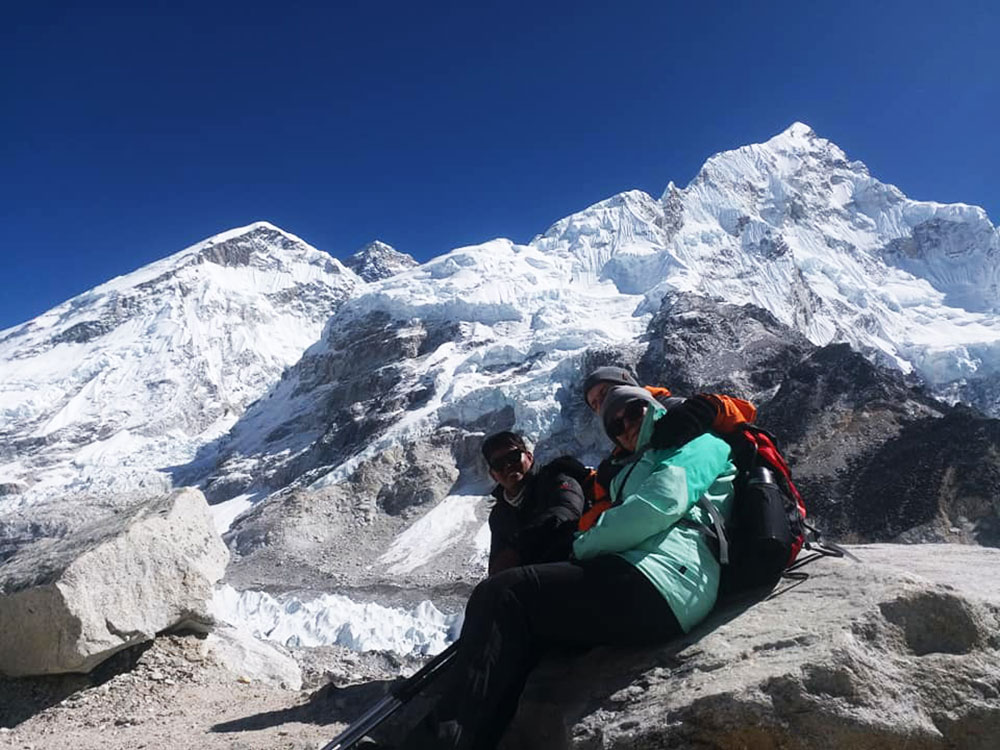
From Lobuche will be a short hike to Gorakshep but will be the longest day to the trek because from Lobuche to Gorakshep it will be a 3-hour hike. Unpacking your stuff at the tea house in Gorakshep, start your journey towards the most awaited place, which is Everest Base Camp (12-Day). this will be 4-5 hours two-way from Gorakshep to Gorakshep.

Everest Base Camp (16-Day) is a day tour from Gorakshep (5140m/16864ft), the last overnight camp for any trekkers heading towards Base Camp of Mt. Everest, due to its high altitude, protected area, and carries religious importance to the local Sherpa people, it is legally forbidden to operate any hotels, lodges and tea houses at the Everest Base Camp. So, you need to descend downhill towards Gorakshep.
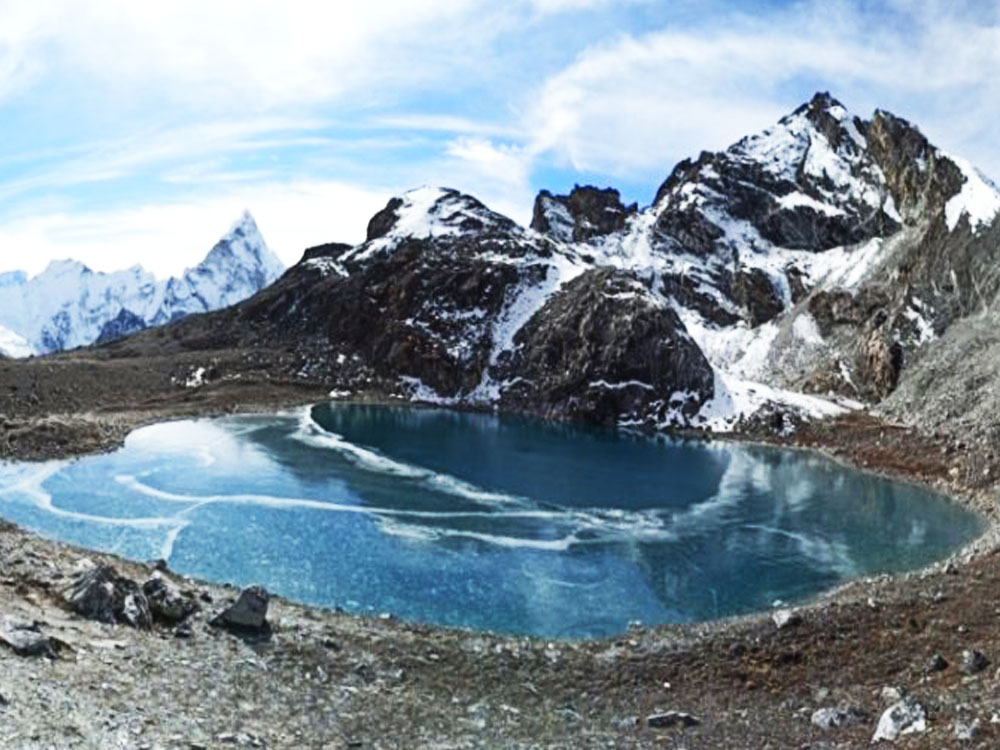
Exploring the base of the highest mountain on earth and making some pictures and videos, descend towards Gorakshep before it is too dark for the next morning's program.
Trekkers by noon reach Gorakshep and carrying their backpacks as light as possible can hike for a maximum of 2.5 hours to reach the Everest base camp.
During the expedition season, mainly in autumn and spring, there will be multiple tented camps for climbers to support with food and other required stuff by their team.
Along with this, climbers spend almost a week at the Everest Base Camp to acclimatize and also to conduct climbing training at the surrounding mountains, which helps them to gain the technical difficulty of Everest.
Although the mountain Everest is an expedition destination, trekkers can trek up to the base camp of Everest which lies at an altitude of 5364 meters.
From Gorekshep, the very next morning, hike towards Kalapatthar (5545m/18192ft), the highest point of the entire trek, this will be a stunning viewpoint to explore 360° panoramic views of the wide range of the Himalayas in and around Khumbu/Everest region and also to experience the close range of Mt. Everest itself better than from the Everest Base Camp.
Kalapatthar which means ‘black rock’, was very recently the original base camp of Mt. Everest, as the altitude is even higher than Everest Base Camp with majestic views of all the Himalayas including Everest.
Further, descend downhill until Lobuche to take a different trail to reach Pheriche (4252m/13950ft) for your overnight stay and then towards Namche Bazaar on the second last day and finally to Lukla on the final day.
The very next morning, fly back to Kathmandu or Manthali (during high trekking season Autumn and Spring all the flights to and from Lukla have been diverted towards Manthali airport which is some 4-hour drive from Kathmandu, due to heavy air traffic)
Everest Base Camp is not a mere trail to the highest base on earth, it is a hero’s journey with diversity in all aspects. Exploring the culture, nature, and vegetation of the remote land on Earth will be once in a lifetime journey.
Starting the trail from lush green vegetation, passing by snow-melted rivers, crossing suspension bridges, and visiting monasteries of which Tengboche monastery is unique in itself, will lead towards the alpine forest and further towards the bare region of the Himalayas for 360° panoramic views is something which can’t be expressed in words.
The native culture, religion (Tibetan Buddhism), lifestyle, and hospitable welcome of the local dwellers are the most fascinating vista during the trek.
No doubt, Everest Base Camp (1 Day) is a strenuous trekking trail due to its high altitude but can be an easy climb with two extra overnight for acclimatization, one being at Namche Bazaar the official headquarters of the entire Khumbu region at the altitude of 3446 meters, and the other in Dingboche at the altitude of 4419 meters.
These two extra nights for acclimatization are what makes a difference for the Everest Base Camp Trek while ascending uphill. Acclimatization makes your body cope with the environment of the Himalayas, the more you acclimatize the more possibility of stepping into the Everest Base Camp dreams comes alive.
This will help to reduce the risk factor of different altitude sicknesses like Acute Mountain Sickness (AMS), High Altitude Pulmonary Edema (HAPE), or High Altitude Cerebral Edema (HACE), commonly known as ‘altitude sickness.
If strictly follow the entire procedure/requirement mainly related to your physical and mental condition while trekking to the Everest Base Camp (16-Day) nothing can stop to from accomplishing your dream come true.
Trekkers mainly get confused while dreaming about Everest Base Camp (6-Day), as there are multiple numbers of trekking agencies both local and international dealing with Everest Base Camp Trek and they go through different information available on ‘Google’.
This information is useful but may not match one’s physical condition, so every individual has a different physical condition and their body needs a different environment to stimulate the situation.
Keeping all this in mind and observing the minute details of hundreds of trekkers, we suggest all the trekkers be physically and mentally well-prepared before heading towards Everest Base Camp.
How does it work maybe your question, the best and easiest way to accomplish the entire Everest Base Camp trek is not your age, it is only your fitness level and the number of days you have for the trek.
To make your dream come true, trekkers should at least start engaging with some exercise. This can be through regular exercise like cycling, swimming, hiking, walking, jogging, etc at least an hour per day. Hiking for 6-7 hours per day at a high altitude won’t be an easy task for any.
No matter how many times you have been to the Everest Base Camp is not an excusable solution, every time you trek will be a new journey for your body. To maintain a regular pace physical exercise is a must to do before joining Everest trekking or any high-altitude trek in Nepal.
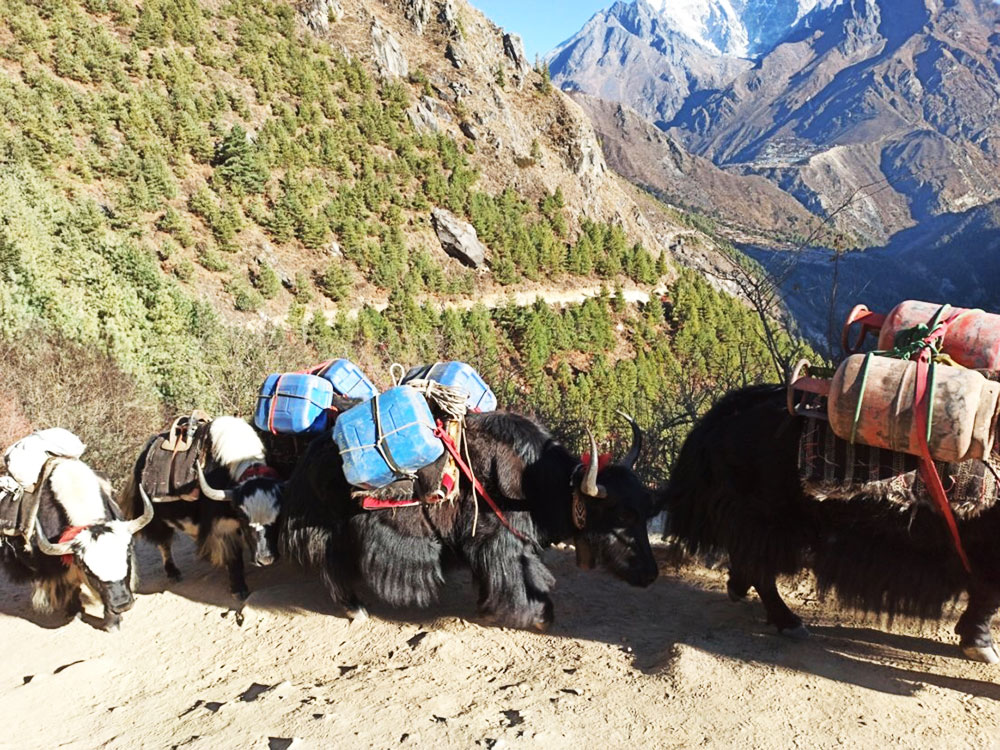
Conclusion:
Discover Altitude hopes this information will be useful for any trekkers planning for Everest Base Camp Trek. All the information provided above is informative with experience, as our team shares decades-long experience related to Everest Base Camp Trekking, with travelers from different countries, different races, and gender.
The truth behind this article is to provide genuine information not to make travelers scared of the situation and the altitude but only to make them strong within themselves and prepare mentally and physically for the Everest Base Camp, instead of facing a problem in the Himalayas or just turning back due to physical difficulty.
If you are enthusiastic about your dream and want to explore the Himalayas of Nepal in a more relaxed way or for a short period, you can contact Discover Altitude, we will hear from you about your level and customize the trek with a personal touch.
For more information or booking, WhatsApp: +977-9841161593 or Email: [email protected]










